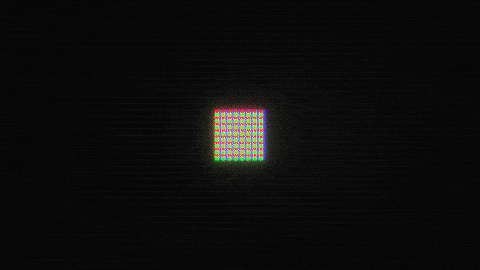This story originally appeared in Open Source, our weekly newsletter on emerging technology. To get stories like this in your inbox first, subscribe here.
When Apple first announced its intention to release the Vision Pro in June this year, the device caught the attention of the world with its sheer uncanniness. Heralded as the world’s first “spatial computer,” it introduces features that will computationally redefine the way we live and work.
Despite being packed with seemingly revolutionary features, recent media reports have called out the new device’s hefty price tag as the elephant in the room. The Apple Vision Pro is expected to set consumers back USD 3,499 per device, nearly double of what it costs to purchase the latest flagship iPhone model.
While cost is a significant consideration, there are deeper technological considerations at play that need to be examined.
The enthusiasm surrounding the Apple Vision Pro is reflected in the staggering growth projections for the extended reality (XR) market. XR is an umbrella term for any technology that alters reality by adding digital elements to the real-world environment, including but not limited to augmented reality (AR), virtual reality (VR), and mixed reality (MR). Multiple sources have projected the global XR market to grow exponentially in the coming years:
- Mordor Intelligence predicts the XR market will grow from USD 105.58 billion in 2023 to USD 472.39 billion in 2028, with a CAGR of 34.94%.
- Emergen Research forecasts that the global XR market will reach USD 1.24 trillion in 2035, boasting a CAGR of 24.2%.
- IMARC Group reports that the global XR market reached USD 64.5 billion in 2022 and is expected to reach USD 604.3 billion by 2028, driven by a CAGR of 43%.
Much of the excitement surrounding the Vision Pro can be attributed to Apple’s history of pioneering innovations. Some have, perhaps prematurely, likened the trajectory of the Vision Pro to the development of the iPhone, which has evolved from its early and bulkier versions to the sleek, feature-rich devices of today. This analogy suggests that the recently announced version of the Vision Pro is just the first of many iterations to come.
While this comparison holds some merit, there are technological constraints that even a tech giant like Apple faces.
Moore’s law describes the law of physics that limits how small computing chips can realistically be manufactured without becoming scientifically unstable. Computing chips typically function by electronically switching their transistors on or off. This is a process that translates to binary data at scale, forming the backbone of computing. However, when transistors become too small, the Heisenberg uncertainty principle explains that it becomes impossible to accurately track this process due to the constraints of quantum mechanics. This trade-off between size and computing power impacts not only the Vision Pro, but all devices, from laptops to smartphones, among others.
Applying this context to the Apple Vision Pro and, for that matter, any other computing device in general, the number and complexity of features generally determine the physical scale of the products they are programmed to. The Vision Pro is designed to offer a wide array of advanced features, encompassing precision head, eye, and hand tracking, digital personas, spatial audio systems, and more. These features demand considerable computing power, which elucidates Apple’s significant investment in its newly developed R1 chip to accommodate the depth of features promised by the headset.

It’s worth noting that Apple appears willing to break from tradition and procure technology from external vendors if necessary. While the company has previously outsourced various manufacturing processes, these primarily entailed the procurement of low-level components such as small metal parts, paper boxes, and batteries, and typically from China. This practice rarely extended to advanced technology that directly influences the functionality of its products, making the transition from Intel chips in its Mac computers to Apple silicon in 2020 seem like an anomaly.
Yet, according to The Information, Apple has recently engaged in trials involving advanced displays made by Chinese companies BOE Technology and SeeYa Technology, with plans to integrate them into the Vision Pro. Apple analyst Ming-Chi Kuo also said that while Apple had contemplated producing a more affordable and feature-light version of the Vision Pro, these plans have since been abandoned.
These instances may allude to a trilemma that will shape the future of XR devices, including the Apple Vision Pro and its competing alternatives. Crafting a product that adheres to scientific constraints while meeting consumer demands suggests that XR devices can prioritize only one or two of three key characteristics: cost, portability, and features. This, in turn, will shape how major players compete in the XR device market, with companies like Meta, Xreal, ByteDance’s Pico, and others striving to differentiate themselves by emphasizing their unique take on these three characteristics in their respective products.
What this could signify is that the Apple Vision Pro may remain as a premium offering for the foreseeable future. However, this need not be a cause for concern.
Drawing a parallel with the smartphone industry, the invention of the iPhone paved the way for the development of numerous alternatives that have since achieved widespread adoption globally. Similarly, even if the Vision Pro cannot be manufactured at a scale and price point suitable for the majority, it’s likely that this void will be filled by one or multiple other entities looking to enter this dynamic space.
If you enjoyed reading this, you might also be interested in:
- Xreal takes on tech giants Apple and Meta with new AR glasses (by KrASIA Connection)
- ByteDance faces Pico predicament despite denying plans to close VR business (by KrASIA Connection)
- Apple taps TSMC to build custom iPhone 5G modem in 2023 (by Nikkei Asia)

